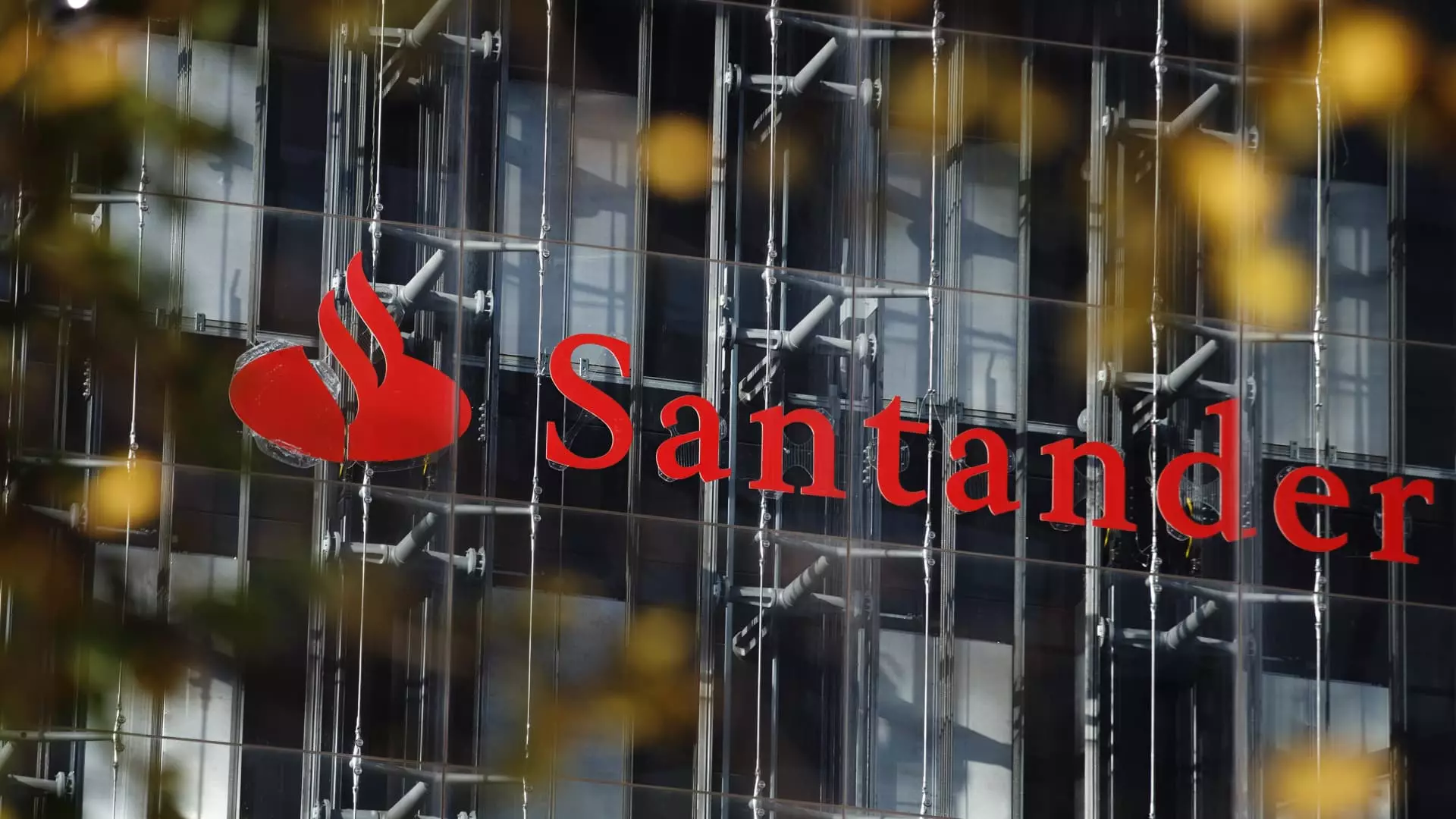In a stunning turn of events, Spanish lender Banco Santander has outpaced Swiss banking behemoth UBS to claim the title of continental Europe’s largest bank by market capitalization. A surge in Santander’s stock price, bolstered by strategic decisions and a burgeoning U.S. presence, reveals a tale of resilience amidst adversity. While the traditionalists might argue that the bank’s 35% stock increase this year reflects a mere anomaly, it’s critical to recognize it as a calculated triumph against the backdrop of a shaky financial landscape marred by U.S. tariffs and protectionist policies.
The market capitalization disparity—Banco Santander standing tall at approximately $103.78 billion contrasted with UBS’s $97.23 billion—evokes deeper questions. Is the market simply responding favorably to Santander’s nimble maneuvers in response to geopolitical tensions? Or does it signify a systemic questioning of UBS’s strategies post-Credit Suisse merger?
Total Market Shockwaves: The U.S. Tariff Impact
The ripples of U.S. tariffs have sent shockwaves through Europe’s banking sector. The critical 20% tariff on imports from the European Union has heightened fears of a recession across the continent, loading the economic atmosphere with threats of further trade escalations. UBS, focusing heavily on wealth management, finds itself vulnerable under these circumstances, having lost almost a fifth of its value this year alone. This raises an unsettling reality—does a bank built on reliance on high-net-worth individual investments risk long-term stability in such an unpredictable environment?
In contrast, Banco Santander, while still impacted by these tariffs, shows remarkable agility. By easing into ‘auto lending’ in the U.S. and forming strategic partnerships, the bank positions itself not as a defensive player but as a proactive contender in a hostile economic environment, turning obstacles into opportunities.
The Divergence in Business Models: A Tale of Two Banks
At the heart of the narrative lies the contrasting business models of Santander and UBS. With Santander only deriving 9% of its profits from the U.S., it is relatively insulated from dependency on an American market that currently presents more challenges than opportunities. This strategic cushion underlines an essential facet of modern banking: adaptability. In a world where banks can no longer afford to be conventional, Santander’s investment in diversified lending through partnerships represents a refreshing pivot.
On the other hand, UBS, armed with its vast wealth management resources, faces the pressing challenge of navigating stringent capital requirements while maintaining profitability. The potential impact of the upward pressure on the Swiss franc, which has appreciated against the dollar post-tariff implementation, further compounds UBS’s hurdles. It could limit profitability and fuel a cycle of economic contraction in Switzerland while undermining the competitive edge UBS holds with its clientele.
The European Union’s Defense Spending Initiatives: A Silver Lining?
Interestingly, amidst these brewing storms, a glimmer of hope emerges from the European Union’s ReArm initiative announced in March. This fresh fiscal impetus aims to loosen regional fiscal rules and enhance defense spending, potentially releasing capital that could bolster European banks. With capital flowing into defense, could the banking sector witness growth where protectionist policies have otherwise stifled it?
It’s crucial to note that such governmental interventions may not provide a panacea for existential threats posed by external trade actions. Indeed, while the initiative offers a means of recovery, it cannot overshadow the reality that banks like UBS face tightening profit margins and looming uncertainties that come with evolving regulatory pressures.
The Need for Long-Term Strategies in Unstable Waters
As the repercussions of trade wars continue to evolve, European banks must cultivate long-term strategic frameworks that embrace not just resilience but innovation. The financial landscape’s turbulence requires creative problem-solving that transcends traditional banking. Santander’s growth aims at diversifying its portfolio and expanding aggressively into non-conventional territories, which may soon emerge as a preferred model for banks struggling to stay afloat in uncertainty.
In this political and financial quagmire, both Santander and UBS illustrate that the ability to adapt and innovate is paramount. Only those with a proactive approach to uncertainty can hope to thrive, while cautiousness and nostalgia for past glory risk leading to obsolescence in a world that demands agility at its forefront. The time for reactive strategies has passed; the future now belongs to the bold.

Leave a Reply